Most people don’t know where Madagascar is, or that it’s even a real place. The animated movie we fondly remember from childhood did not invent this island, and no, there are no penguins on it. Madagascar is actually the fourth largest island in the world – almost the size of Texas – and lies off the southeast coast of Africa. Because of its geographic isolation, it is home to some of the craziest and most endangered animals, from singing lemurs to pinky-sized chameleons to tenrecs (kind of like hedgehogs) that rub their quills together for communication.
I studied abroad in Madagascar last semester for the wildlife, having no expectation of what the food would be like. Little did I know I was about to embark on an adventure of a different sort. Here are a few of the things I consumed:
1. Rice
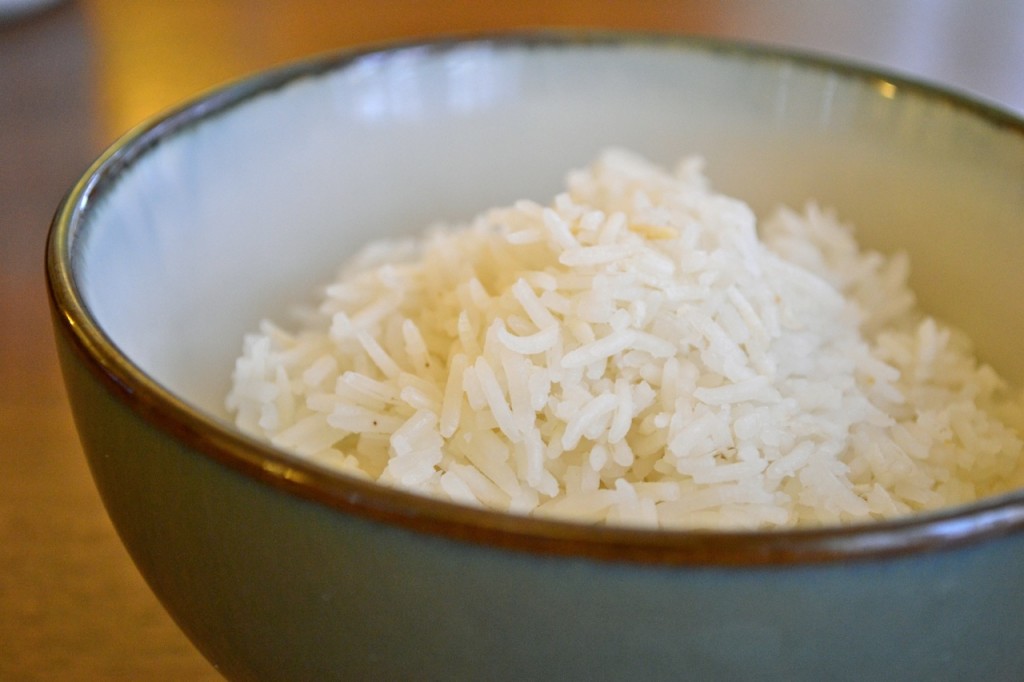
Photo by Kelda Baljon
Not so crazy in and of itself, but in the mass quantities I was served. If there is one food the Malagasy love, it is rice. I can’t even begin to tell you how much rice I ate during my three months in Madagascar. There were days when I ate rice for breakfast, lunch and dinner. Haven’t touched it since.
2. Bananas
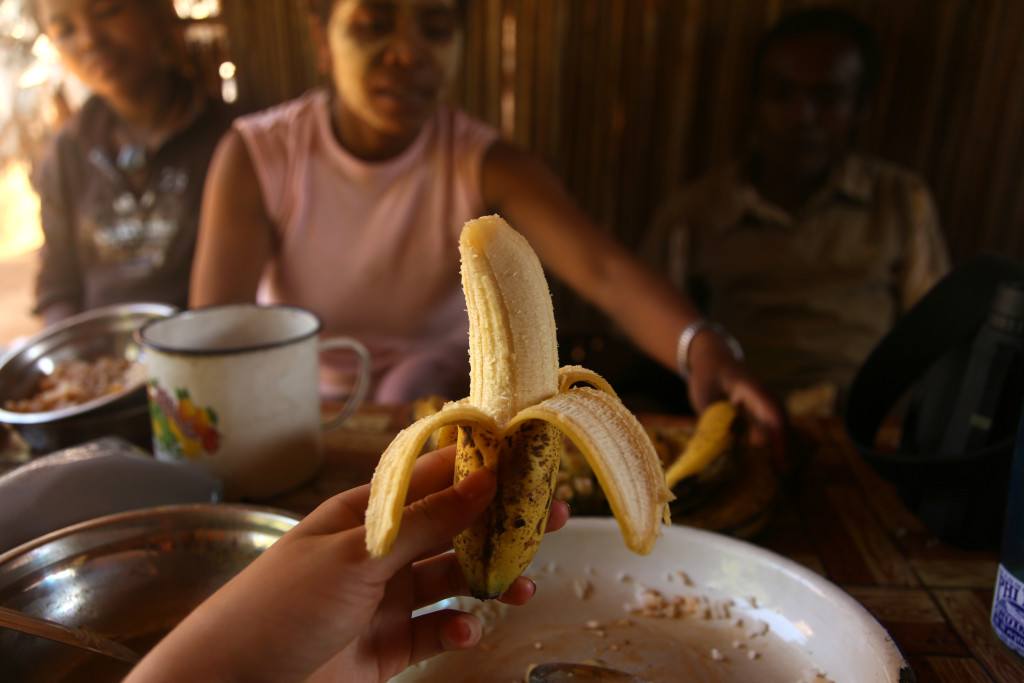
Photo by Izzi Clark
After rice, my second most consumed food was probably bananas. Good thing Madagascar’s bananas blow America’s bananas out of the water. I ate them right off the tree, flambéed, drizzled with chocolate or dipped in my personal peanut butter jar when I was feeling homesick. (Warning to any American going anywhere: BYOPB.) Note the remains of my rice in the background of this banana photo – a reminder that I still really only ate rice.
3. Zebu
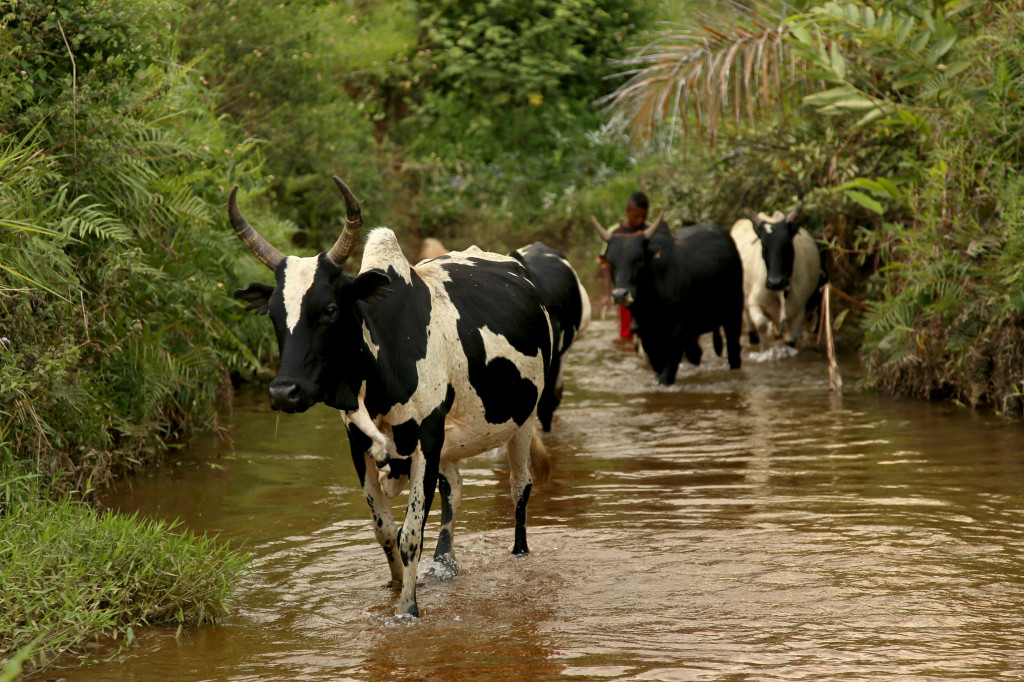
Photo by Izzi Clark
Zebu are like cows but they have long horns and big humps of fat on their necks. Honored guests are served just the hump on a platter. To eat. Thankfully I was never an honored guest. I did, however, consume zebu in many forms: stewed, kebabed (or brochetted as they would say), burgered, jerkied and smoked over a campfire. I even tried zebu tongue, which sounds awful but was shockingly tasty.
4. Ravitoto
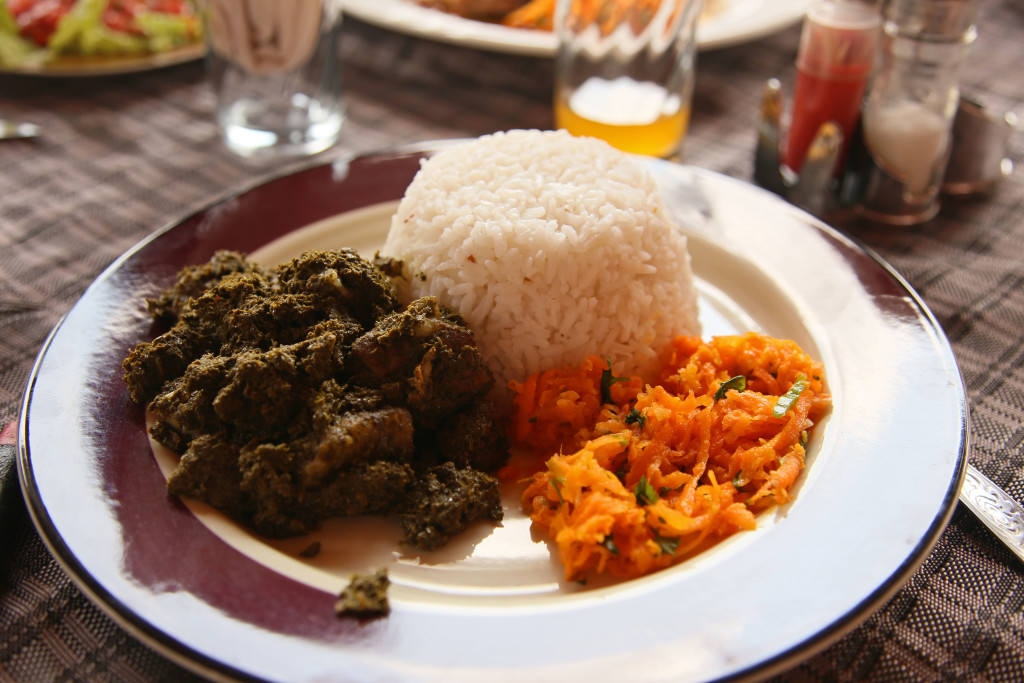
Photo by Izzi Clark
Nothing like ravioli, ravitoto is the comfort food of Madagascar, and possibly my favorite traditional Malagasy dish. It is a stew of ground cassava leaves simmered with pork (mostly pork fat tbh). It ain’t pretty and some would argue that the taste matches the appearance, but I was a big fan. It tastes a bit like matcha, if you’re into that kind of thing.
5. Profiteroles
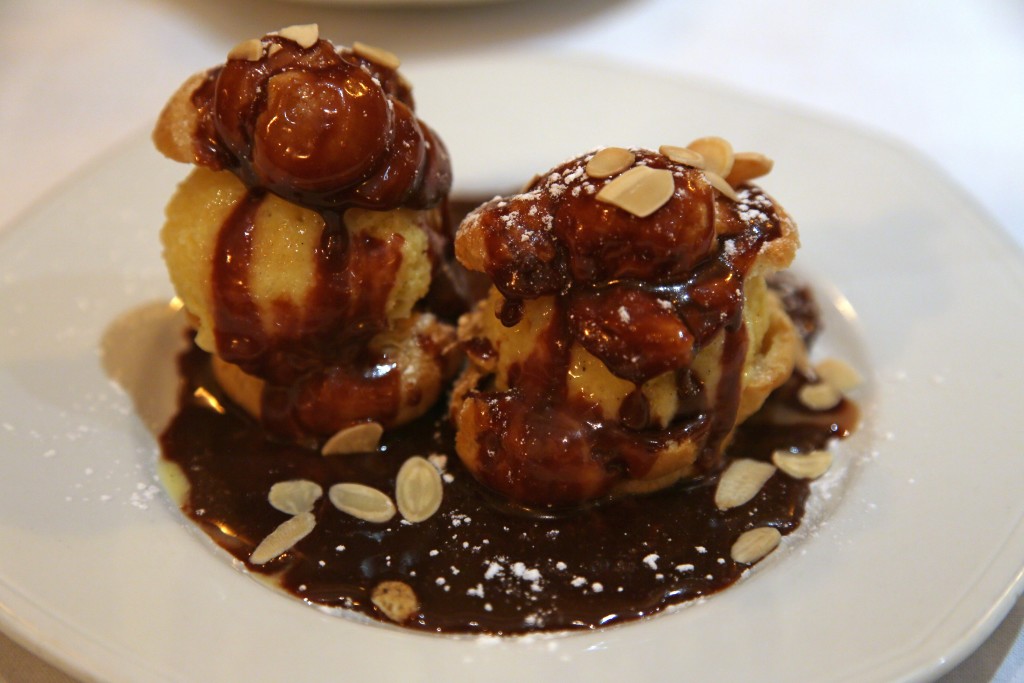
Photo by Izzi Clark
The cool thing about Malagasy cuisine is that it’s been influenced by all the cultural melding that has happened since the first humans arrived on the island less than 2000 years ago. There is a heavy French influence, especially in Antananarivo, the country’s capital. I took advantage of this primarily in dessert form, gorging myself on chocolate croissants, crème brûlée and profiteroles, which are little cream puffs stuffed with ice cream and drowned in chocolate sauce. Comme ça.
6. Vanilla
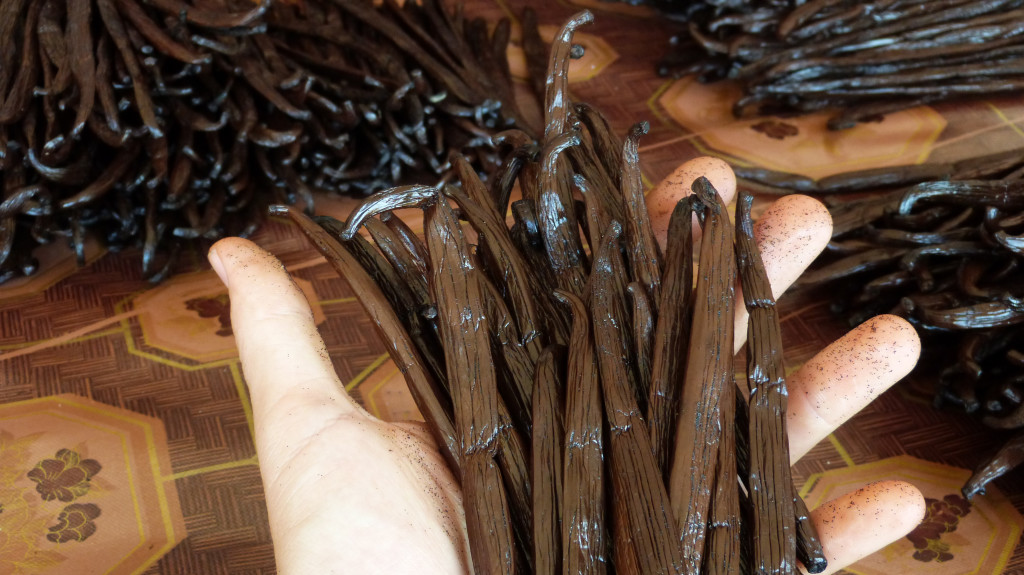
Photo courtesy of Wikimedia Commons
Madagascar is famous for its vanilla. Because vanilla was introduced relatively recently, there are no natural pollinators on the island and it has to be hand-pollinated by humans, which makes it some of the highest quality in the world. Many of the desserts in Madagascar had a trace of the warm, spicy aroma, but the most peculiar dish I tried had to be the vanilla cream fish stew. Still not sure how I feel about it.
7. Fish stew and ginger fried rice
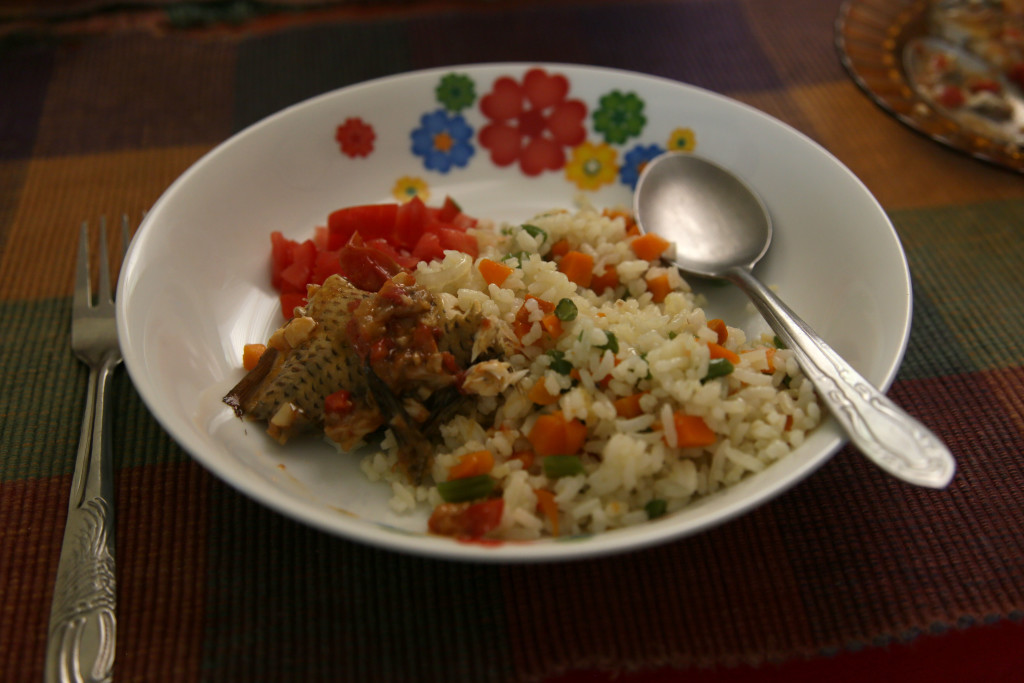
Photo by Izzi Clark
I had one of my favorite meals in the home of my lemur guide, Menja. She claims she taught herself to cook, and she is one of the best cooks I have ever encountered. I watched (uselessly) as she put together a beautiful feast of traditional fish and tomato stew along with ginger fried rice and a simple salsa, using nothing but a pot over hot coals.
8. Pistache mamy
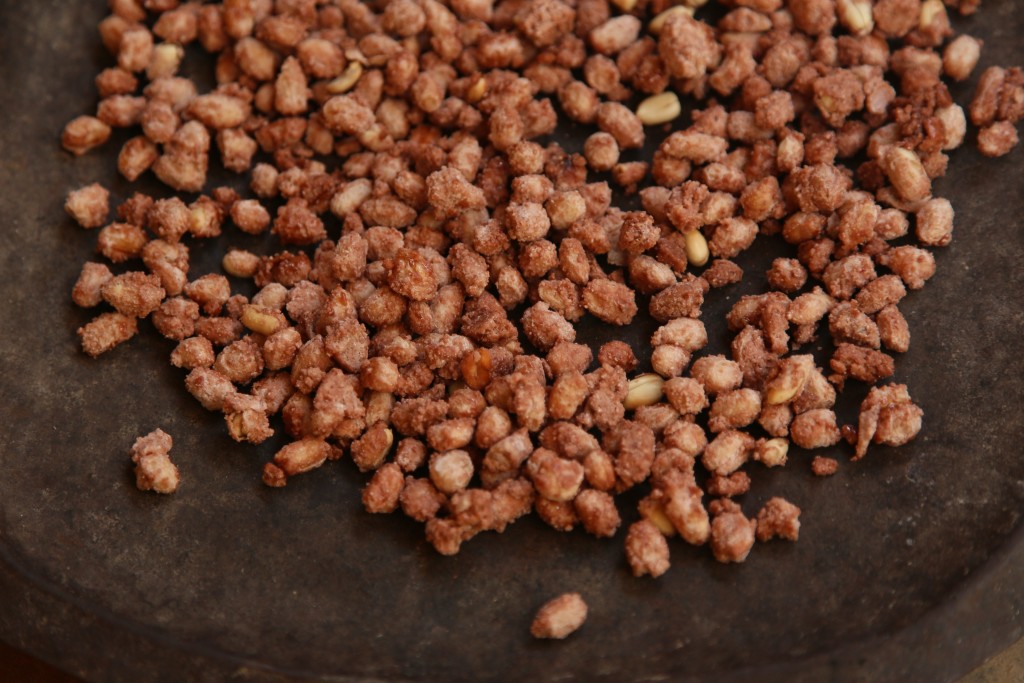
Photo by Izzi Clark
Menja also made an absurd quantity of pistache mamy. Pistache means “peanut” in French and mamy means “sweet” in Malagasy. Once you start eating these little guys, you just can’t stop. I justified the fistfuls I stuffed my face with during hikes as a trail mix substitute, but really they were just peanuts roasted in several cups of sugar, my own personal crack.
9. Rhum arrangé
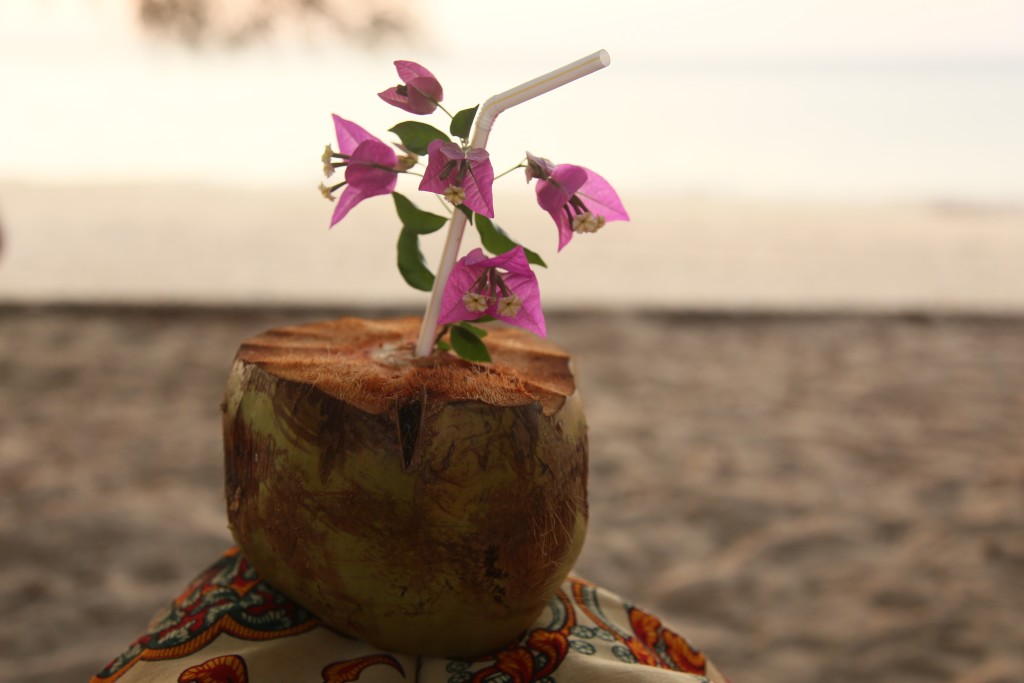
Photo by Izzi Clark
Madagascar is the ideal place to grow sugarcane, and thus the ideal place to make (and drink) rum. It might as well be the national drink, and the Malagasy love mixing it up with funky flavors like coconut, ginger and baobab. Each village also brews its own moonshine, known as toaka gasy. Beware, one shot of this stuff will take you straight from sober to hungover.
10. Wine
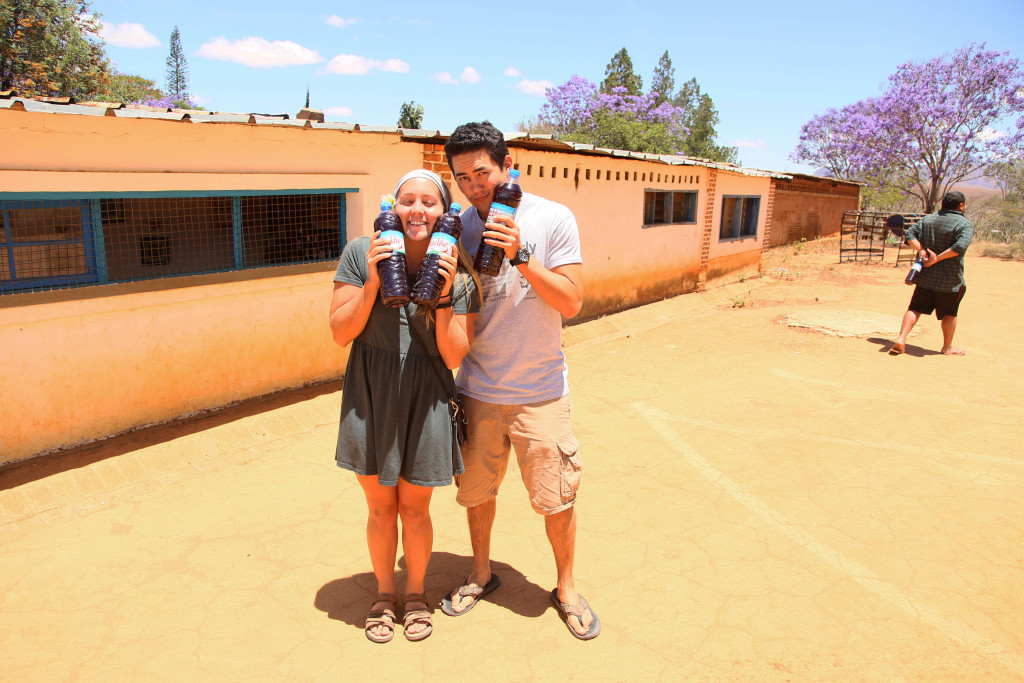
Photo by Izzi Clark
In a town called Ambalavao in the central highlands, I visited a vineyard that was established back when Madagascar was still a French colony. In addition to tasting the wines, we were allowed to fill up 1.5-litre bottles for the equivalent of 30 American cents. 30 cents. I nearly lost it. Honestly, the wine itself was questionable at best, but as a broke college student I could barely tell the difference. After all, what is studying abroad if not an opportunity for underaged but legal drinking? Just be sure to follow these rules.
I went to Madagascar for the lemurs, but ended up on an unexpected culinary adventure. From mashed up cassava leaves and pork fat to fluffy French pastries, Malagasy cuisine is the food-baby of a vibrant combination of cultures.


